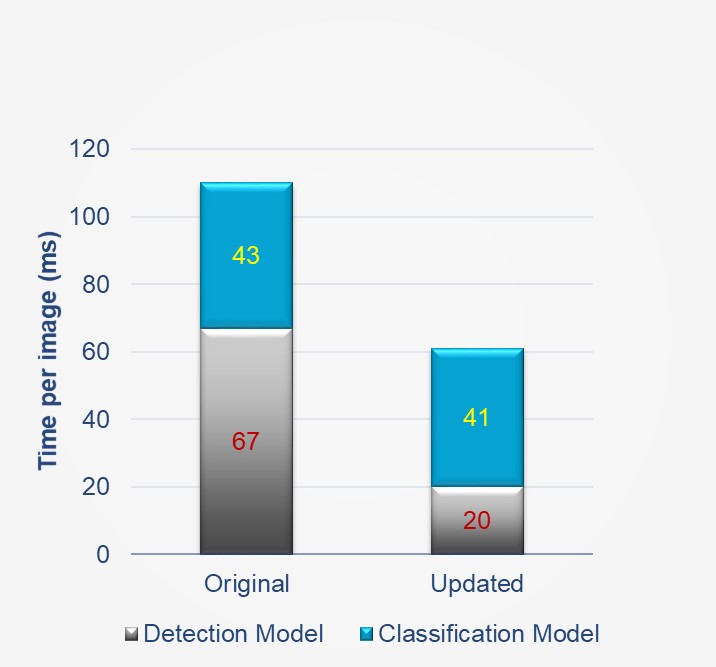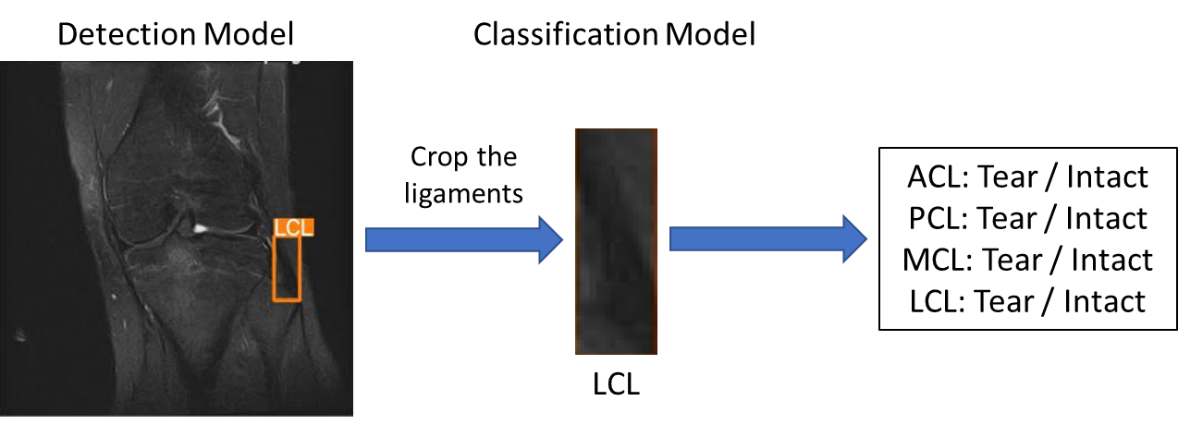AI-based medical diagnosis system for meniscus tear
Research & Innovation
AI-based medical diagnosis system for meniscus tear
In late 2023, several updates and optimizations were made to our system. The position detection model and rupture assessment model were replaced with lighter model structures. While maintaining the same level of prediction accuracy, the position detection model decreased by 1/4 and the rupture assessment model by 1/2 in size. The average prediction time for a single image decreased from 110 milliseconds to 61 milliseconds, resulting in a speed improvement of approximately 45%. Additionally, the lighter models are easier to deploy on edge computing devices.
Besides, we also developed a new model for detecting knee ligament injuries as an additional function. Following the approach of the meniscus system, the system architecture first selects the positions of the cruciate ligaments and collateral ligaments from MR images before determining whether there is any injury. Currently, the detection model interprets the positions of the knee cruciate ligaments and collateral ligaments with mAP@0.5 of 0.92 and 0.78, respectively. The predictive AUC of the classification model for each ligament injury ranges from 0.86 to 0.96. After further optimization and improvement of the models, this system will be integrated into the original system as an additional auxiliary diagnostic tool, aiming to achieve a comprehensive solution.


